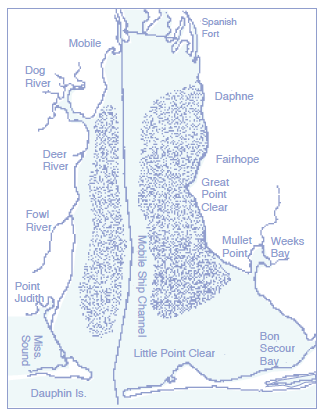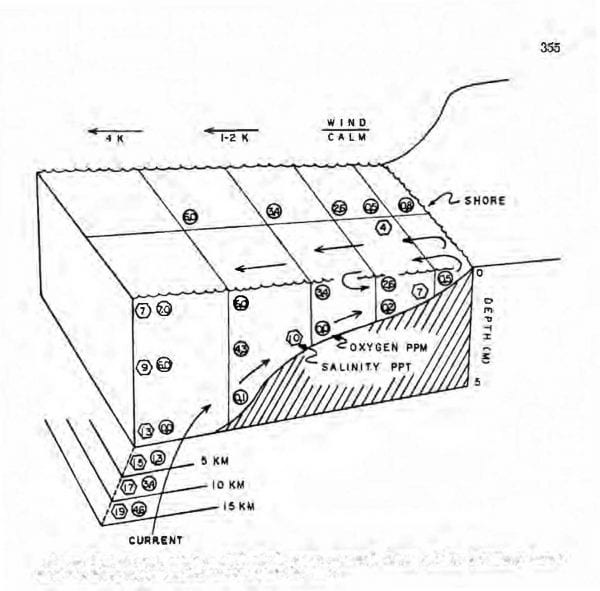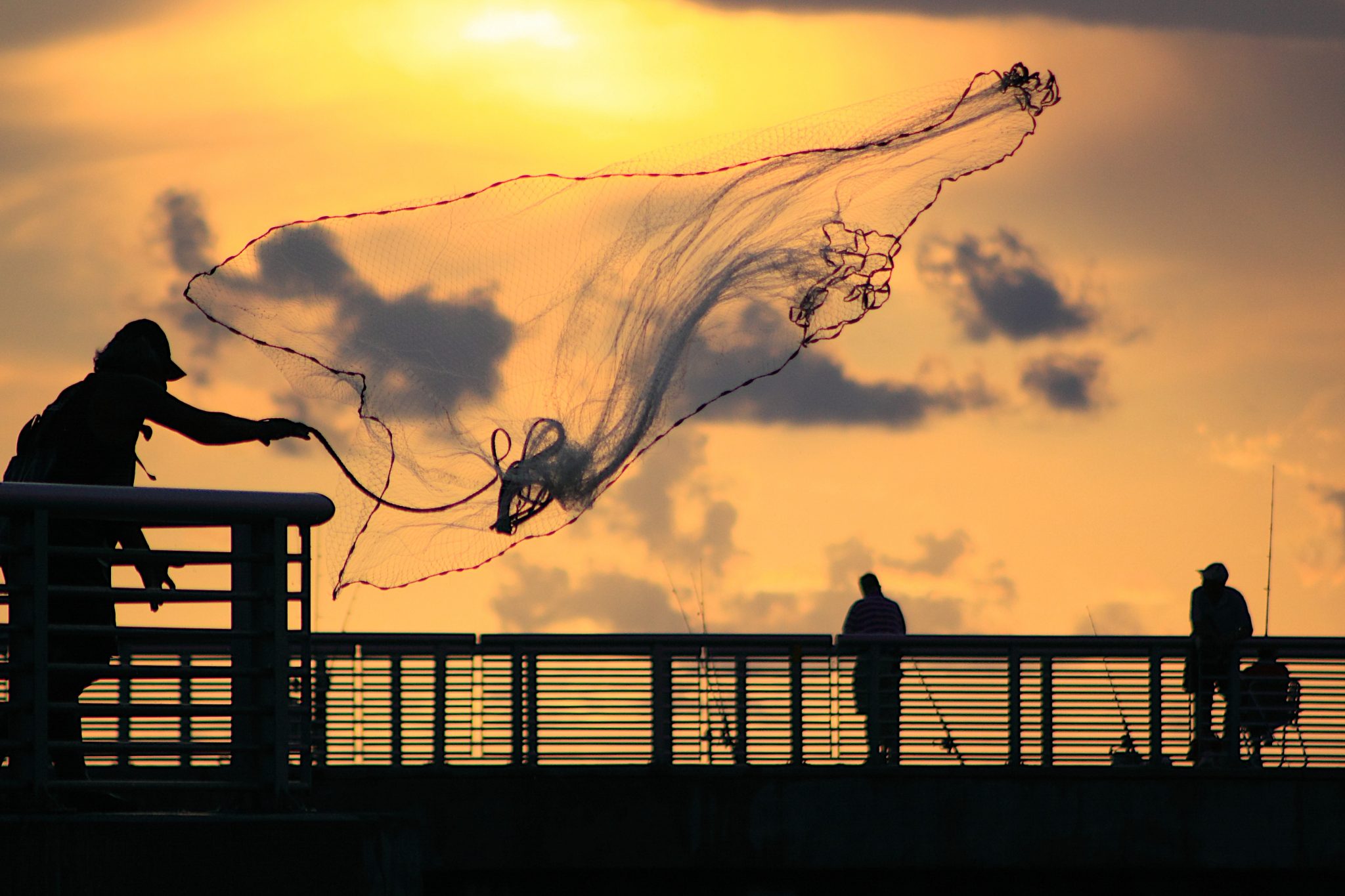Aquaculture

Jubilee! This cry is eagerly awaited each summer by Mobile Bay residents. They are excited by the prospect of gigging hundreds of flounder or catching tubs of crabs in just a few hours.

Figure 1. Areas of low-oxygen water in Mobile Bay.
Although jubilees have been reported in other areas, Mobile Bay is probably the only body of water in which this phenomenon occurs fairly regularly. It happens most often along the Bay’s upper eastern shore from Great Point Clear to just north of Daphne. Jubilees also occasionally occur south of Point Clear to Mullet Point and on the western shore at Deer River and Dog River.
Jubilees may affect the entire eastern shore from Daphne to Mullet Point, a distance of about 15 miles. Or, they may be limited to only a few hundred feet of beach. The smaller, localized jubilees occur more often than the larger ones but are more difficult to locate.
For a jubilee to take place, a very specific set of conditions must exist. They occur only in the summer, usually in the early morning before sunrise. The previous day’s weather conditions must include an overcast or cloudy day, a gentle wind from the east, and a calm or slick bay surface. Also, a rising tide is necessary; a change to a falling tide will stop the jubilee. It takes a combination of all these conditions to produce the phenomenon.
Jubilees are caused primarily by upwellings or upward movement of oxygen-poor bottom waters forcing bottom-type fish and crustaceans ashore. Bottom water low in oxygen results from several coincidental circumstances. Pockets of salty water accumulate in the deep parts of the northern portion of Mobile Bay and stagnate during calm conditions. The stagnation is caused by a salinity stratification, or layering effect, with the heavier salty Gulf water overlain by lighter, fresher river water. Stratification prevents movement of oxygen from the air into the bottom saline water.
These deep water pockets tend to collect plant matter washed into the Bay from the marshes and swamps upstream. As this vegetative matter decomposes, it provides food for the microorganisms in the water. An abundant food supply combined with the warm water temperature causes a population explosion. As these microorganisms grow and multiply, they consume tremendous quantities of oxygen. In this way, the bottom water becomes very low in oxygen. Normally, this oxygen-poor water remains in the deep pocket offshore.

Figure 2. Typical wind, salinity, and dissolved oxygen measured during jubilees illustrating how a flood tide forces oxygen-deficient water against the shore. (Figure courtesy of “Limnology and Oceanography,: 1973. Vol. 18 No. 3, pp. 353-366.)
However, a gentle east wind (not strong enough to mix the water near shore) can set up a surface current that moves the normal upper layer water from near shore to offshore. The oxygen-poor bottom water is then pushed shoreward by a rising tide and a return bottom current (Figure 2). As this low-oxygen water mass moves shoreward, sea creatures in its path are driven in front of it unless they can swim over the top.
Some fish can easily swim over the top of the advancing low-oxygen water mass. Bottom-dwelling fish and crustaceans, however, are unable to easily escape. Once the oxygen-poor water mass moves to the shoreline, the fish and shellfish swimming in front of it are trapped. The bottom-dwellers, previously occupying hundreds of acres of bay floor, now teem along the water’s edge.
The species typically seen during jubilees are flounder, stingrays, eels, blue crab, and shrimp. Smaller fish, such as bay whiffs, hogchokers, shiners, anchovies, and needlefish, and juvenile catfish, croaker, and spot are also often trapped.
Fish and shellfish trapped by jubilee conditions behave very strangely, but their behavior is simply an attempt to get enough oxygen to survive. Since they cannot get the oxygen they need from the water as they normally do, they try to get it from the air. Jubilee-affected blue crabs can be seen blowing bubbles from their mouths while clinging to pilings. Flounder often lie at the water’s edge gulping air and passing it over their gills. Eels leave the water and burrow tail-first into the moist sand, leaving their heads in the air with mouths open.
Due to lack of oxygen, these jubilee-affected fish and shellfish cannot carry out normal muscular activities, such as swimming. They move slowly and seem reluctant to swim even to escape capture. However, few fish or crustaceans actually die during jubilees, except for those caught by jubilee enthusiasts.
Jubilees usually end at sunrise when oxygen is produced by photosynthetic activity of plant life in the water. The affected fish and shellfish then swim back to their bottomwater habitat . . . until the next jubilee!
Richard K. Wallace, Extension Marine Specialist, Associate Professor, Fisheries and Allied Aquacultures. Originally prepared by William Hosking, former Extension Marine Economist.
Reviewed June 2021, The Jubilee Phenomenon, ANR-0834

